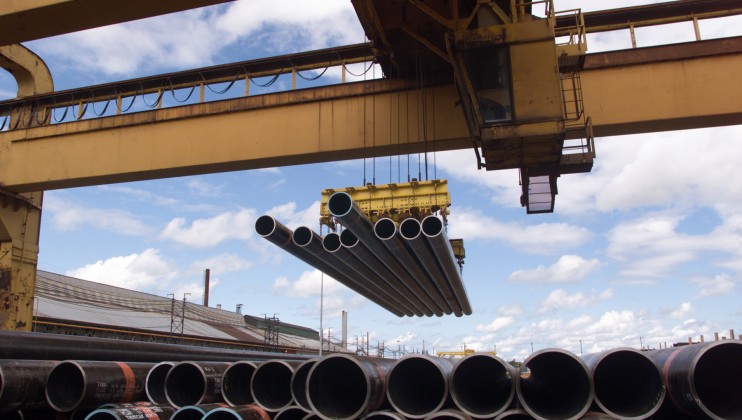
Nothing like an election year to put America’s factory floors in the spotlight.
From an opinion by Scott Paul, first published on Medium:
Every four years, the American manufacturing sector is thrust into the national spotlight.
Politicians, media scrums in tow, roll up their sleeves to tour battleground state factories and hold televised rallies back-dropped by assembly lines.
Their campaigns – or, in this day and age, their loosely affiliated super PACs – drop millions of dollars on manufacturing-themed TV advertising: hardhats, blue-collar workers, stuff being made, the American flag.
In the past, candidates have made big promises regarding plans for manufacturing or trade policy that they haven’t kept. This year’s crop of contenders is making such promises right now, though it’s anyone’s guess at how committed to them they really are.
Then we have an election. And then our leaders’ interest in manufacturing generally returns to a state of slumber. And it shows: Manufacturing job creation is lagging far behind those in the rest of the economy. Our middle class continues to fall apart.
Those campaign promises are inevitably walked back, if not outright abandoned, by the politicians who made them. Blowback, in the form of op-eds by self-appointed financial or foreign policy thought leaders that dismiss pro-manufacturing advocacy as cheap romanticism, sporadically appear in major media outlets.
America has a future, we’re told, as a nation of coffee baristas, cocktail servers, cashiers, and coders. That’s where the jobs are, they say.
Manufacturing is worth fighting for. America’s domestic manufacturing sector still accounts for two-thirds of our country’s private sector R&D; 90 percent of patents filed in the U.S., and more than 12 percent of our GDP.
But through it all, the fundamentals that undergird manufacturing’s importance remain the same.
Yes, we’ve seen tens of thousands of factories close since 2000, and along with them we’ve lost millions of factory jobs—and the multitude of other jobs that depend on them. Yes, the American economy has shifted footing. The international market has been let out of the bottle, and there is no putting it back in.
Still, manufacturing is worth fighting for. America’s domestic manufacturing sector still accounts for two-thirds of our country’s private sector R&D; 90 percent of patents filed in the U.S., and more than 12 percent of our GDP. Our national security, meanwhile, depends on many type of manufacturing, from steel to semiconductors.
Not to mention those middle class jobs. The sector still employs 12 million of our fellow Americans. A typical manufacturing job supports four or five other jobs elsewhere in the economy. And those factory jobs pay better than you’d think – especially for workers who don’t hold a four-year degree.
There are a lot of American workers out there that fit that description. And the manufacturing jobs that cater to them are part of the web of interconnected tissue that keeps our economy moving, and our wealth shared. All told, that’s a lot of impact.
Manufacturing matters when no one is paying attention, between elections, and it matters right now, in the midst of a campaign. And as we inch closer to that day when we’ll finally vote in November, I’ll be taking a look at what matters to manufacturers in America.
Trade policy, and how to make it work for America.
Tax reform, and how to bring jobs back to America.
Workforce training, and how to prepare for America’s jobs of the future.
Investing in infrastructure, and how it can help rebuild America.
What’s more, we’ll counter a lot of the myths perpetuated about fighting for manufacturing, from starting “trade wars” to robots eating all our jobs.
There’s a lot to unpack – but it’s an important debate at a crucial time. There’s a lot to understand about how best to keep it made in America.
